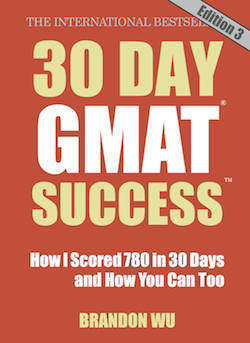When to Ignore My Advice
In several previous posts, we talked about assigning values as a great alternative to solving with algebra. Assigning values can give us a greater degree of confidence and help us avoid careless mistakes. However, sometimes it is not the fastest strategy. In this post, we will look at two Yes/No Data Sufficiency questions from the GMAT Official Guide (13th Edition) that could be solved by assigning values, but that we can actually solve more quickly by thinking about the properties of the numbers involved.
First, question #97 on page 283. The only information given in the question is that x and y are integers. Therefore, when we look at statement 1, we should be able to tell very easily that this statement alone is not sufficient. The numbers could be positive, negative, or a combination. Statement two, however, yields a lot more useful information. The only way to get a negative result when dealing with exponents is when the base is negative and the exponent is odd. By itself, this information is still not sufficient because we don’t know whether x is negative or positive, just that it is odd. But when we put the statements together, if y is negative, x must be positive to get the sum of x and y to be greater than zero. So the answer to the question is a clear yes when we put the statements together. C is correct.
If you didn’t remember the criteria that must be met to get a negative result when dealing with exponents, be sure to review your special exponent rules. Sure, we could have assigned values for this question, but that strategy would have taken three times as long as simply knowing the properties of the numbers that were revealed by the statements.
Let’s try question #99 the same way. We know from the question that r and s are the numbers we can plug into the equation for x to make it equal zero (that’s what roots are). So r and s when multiplied together equal c, and r and s when added together equal b. From statement one, we learn that r + s < 0. They could both be negative, or they could be a mix of one negative and one positive, so this statement alone is not sufficient to tell us whether rs < 0. Statement two tells us clearly that rs < 0, since rs = c. The correct answer is B.
As you progress in your data sufficiency practice, you will start to recognize in which situations you should assign values and in which you can simply use the properties of the numbers involved. But as we learned in our last math post, if you aren’t quite sure of the number properties being tested, it is always better to assign values and test out some cases than to jump to conclusions. Don’t just guess.
Image courtesy of propella with Creative Commons License

